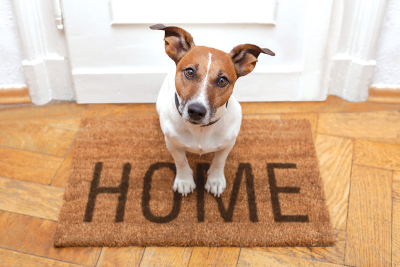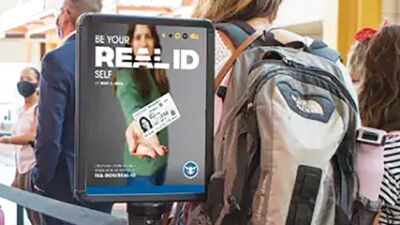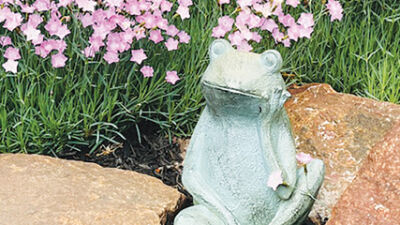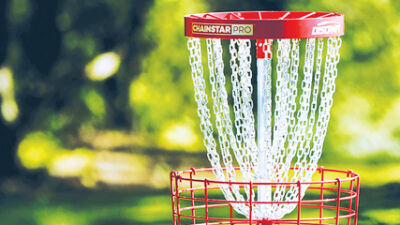METRO DETROIT — Pets are a huge commitment. Before a new owner takes the plunge, they should carefully consider their home, how it’s configured, and whether it makes sense for the pet. And once the animal arrives, they will need time to adjust.
“Animals that come from shelters need a decompression period. They cannot just come home and immediately acclimate to their surroundings,” said Paige Wallace, the animal control officer for Madison Heights. “We don’t know how (shelter animals) are with kids, digging through trash cans, separation anxiety, etc. So, learn your pet — if you’re adopting and the animal is an adult, let them show you what they don’t know, what they’ve never been taught. When they first enter your home, they don’t know you and are just as nervous as you, if not more.
“Start with the basics and adjust as the animal adjusts. Give them time to figure out things,” she said. “Maybe your animal was never walked on a leash. Maybe it never had toys, so they chew everything except their toys.”
In teaching them, she said to use positive reinforcement — for example, gently slipping a toy in their mouth when they try to chew furniture. Avoid negative punishment, such as yelling or throwing out your arms. Scolding will make them associate you with fear and can lead to aggression.
“Follow the ‘Three 3s’ — three days for initial decompression, three weeks to learn the routine, and three months to start to feel relaxed and at home,” Wallace said.
When it comes to dogs, their size and energy level should scale to your home and lifestyle, said Sue Wells, president of the Animal Welfare Society of Southeastern Michigan, a rescue located in Madison Heights.
“It’s also imperative that you take your dog or pup to training. They learn everything from socializing with other pets to house training and good manners,” Wells said in an email.
Wallace said smaller homes are best for cats and small or medium-sized dogs. She said only cats are suitable for apartments. Small or medium-sized non-sporting dogs are best for people who don’t exercise outside often.
“Someone who works away from home is OK to have any size dog, but pay attention to the breed classification, and what they were originally bred for,” she said. “A husky or German shepherd should not be locked up for long hours, but a Lab, pit bill or dachshund would be OK.”
She said cats should never be put in a crate unless being transported. For dogs, Wallace said crates can be used for three months to a year depending on the dog’s temperament. They should be used at bedtime, she said, or when you’re not home or unknown visitors are in the house.
“But never use the crate for a punishment or timeout,” she said. “Make the crate your dog’s home where they go to feel safe. Make sure it has their favorite blankets as long as they don’t chew them while you’re gone.”
For cats, the litter box should be scooped daily and changed about every three to four days. Starting out, place it near the food so that the cat can find it.
“It’s not uncommon to have a litter pan on each floor,” Wallace said.
She suggests not using pee pads for dogs if you can help it.
“Pee pads use scent detection to help the dog know they’re able to use it. Some dogs will remember that spot and continue to go to the bathroom there even when you remove the pee pad,” Wallace said.
In terms of environmental hazards, all dogs should avoid all types of mushrooms, fertilizer, salt — even if it’s described as having “pet safe” levels — and gardens. Dogs should never be fed grapes, avocados or onions.
With cats, keep them away from household plants such as aloe vera, lavender, oregano, jade and easter lilies. Be sure to research the plants in your home and whether they’re toxic to felines.
If other animals are present, boundaries should be established with baby gates or by leashing the animals to keep them separated until they have familiarity.
“Don’t be tense when introducing them for the first time. Animals feed off your body language and energy. Allow them to determine their pecking order without you doing it for them,” Wallace said. “Just make sure no small children are around, and that they’re always separated by a barrier until you see tail wagging, sniffing, playing, licking, and sharing toys. If this is going on, you’re safe to remove the barrier. But look out for eyes locked on the other animal, stiff tails, hair standing up, ears back, snarling, showing teeth, getting territorial over toys, growling, or just overall excitement levels.”
One should never let their new rescue dog outside while unattended, she said.
“Just because your yard is fenced does not mean they cannot jump the fence. I’ve even seen them jump privacy fences,” Wallace said. “Your new dog should be leashed when taken outside and then taken right back in when they’re done. You don’t know how they are with neighbors’ dogs and you don’t know if they will jump, dig massive holes, or if something may spook them to feel unsafe.”
Local wildlife is another concern.
“Some dogs go after wildlife and will attack and kill. Some dogs are scared and will run back to the door. It’s best to keep your animal vaccinated and away from all wildlife,” Wallace said. “Remember: Coyotes will go after any-sized dogs. It’s important to remember how your dog reacts to that could be life or death for your pet.”
She cautions against using shock collars.
“The dog is not going to learn the very first time you shock them, so if you become a person that repeats it until they listen, this could do one of two things: It could burn the shock collar to your dog’s neck and leave burnt spots on the neck, or it could desensitize the dog, and they will continue to do the behavior. Again, positive reinforcement: reward them for listening the first time. … Give the animal something to look forward to.”
As an aside, Wallace said that during the winter, certain dog breeds enjoy being outside — notably, breeds such as huskies, malamutes, St. Bernards, Bernese mountain dogs and German shepherds. Still, check on them often and make sure they’re not limping along, as they may have snow jammed between their paw pads, which could cause frostbite.
One of the best ways to keep your pet safe is to properly identify them so that they can be returned home if they ever slip out of the house.
“A microchip is always the best way to go,” Wallace said. “Make sure to keep the pet’s information as up to date as possible. Your pet should also have the tag that comes with the microchip affixed to the collar, as well as a tag including the name, address and phone number.”
She said that new pet ownership is a thoughtful process.
“Don’t forget patience, and never expect your rescue animal to be perfect. They’re flawed just as we are. We’re going to have to give a bit, and so will they,” Wallace said. “Time and structure.”
 Publication select ▼
Publication select ▼





















